


Homemade Candle Recipes For DIY Enthusiasts
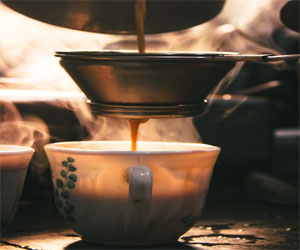
Homemade candles are not only a delightful addition to your home decor but also a wonderful way to express your creativity. Crafting candles from scratch allows you to customize colors, scents, and designs, resulting in unique and personalized creations. In this article, we'll explore some fantastic homemade candle recipes that cater to a variety of tastes and skill levels, from the beginner to the seasoned DIY enthusiast.
1. Basic Container Candle Recipe:
Materials:
Wax (e.g., soy, paraffin, or beeswax)
Wick
Fragrance oil (optional)
Candle dye (optional)
Heat-resistant container
Double boiler or microwave-safe bowl
Steps:
Measure the amount of wax you need based on your container's size. Secure the wick at the center of the container using a wick holder or adhesive.
Melt the wax in a double boiler or microwave, following the wax's specific instructions.
Add fragrance oil and candle dye, if desired, and mix thoroughly.
Pour the melted wax into the container, ensuring the wick remains centered.
Let the candle cool and solidify. Trim the wick to about a quarter of an inch above the surface.
2. Layered Scented Candle Recipe:
Materials:
Wax (multiple colors for layering)
Wick
Fragrance oils (various scents)
Candle dye (multiple colors)
Heat-resistant container
Double boiler or microwave-safe bowl
Steps:
Prepare the container and wick as in the basic container candle recipe.
Melt each color of wax separately, adding specific fragrances and dyes.
Pour the first layer of wax into the container, allowing it to cool and solidify.
Repeat this process with different colors and scents, creating layered bands of wax.
Let the candle cool completely, trim the wick, and enjoy the fragrance and beautiful layers.
3. Upcycled Teacup Candle Recipe:
Materials:
Old teacup or small container
Wax
Wick
Fragrance oil (optional)
Candle dye (optional)
Double boiler or microwave-safe bowl
Steps:
Clean and dry the teacup or container.
Secure the wick at the center of the teacup.
Melt the wax and add fragrance oil and dye as desired.
Pour the melted wax into the teacup.
Let it cool and solidify.
Trim the wick and enjoy your upcycled teacup candle, which not only illuminates but also adds a touch of vintage charm to your decor.
4. Beeswax Rolled Candles:
Materials:
Beeswax sheets
Wick
Fragrance oil (optional)
Steps:
Cut a beeswax sheet to your desired length.
Place the wick along one edge of the beeswax sheet.
Roll the beeswax sheet tightly around the wick.
Seal the ends of the rolled candle by warming them slightly and pressing them together.
Optionally, add a few drops of fragrance oil to the wick for a subtle, natural scent.
These homemade candle recipes offer a taste of the creative possibilities in candle crafting. Whether you're crafting simple container candles or exploring layered and sculptural designs, the process allows for personalization and artistry. As you embark on your candle-making journey, you'll discover that creating your own candles not only brightens your space but also kindles your inner artist.
Crafting Creativity, Tradition, And Skill
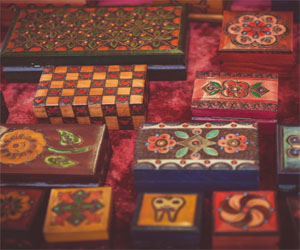 A Marriage Of Form And Function: At its core, woodworking combines form and function. Craftsmen and artisans meticulously design and create objects that are not only visually appealing but also serve practical purposes. From finely crafted tables and chairs to elegant cabinets, woodworking is a harmony of aesthetics and utility.
A Marriage Of Form And Function: At its core, woodworking combines form and function. Craftsmen and artisans meticulously design and create objects that are not only visually appealing but also serve practical purposes. From finely crafted tables and chairs to elegant cabinets, woodworking is a harmony of aesthetics and utility.
The Craftsmanship Ethic: Woodworking is synonymous with craftsmanship. The commitment to precision, attention to detail, and dedication to quality are the cornerstones of this craft. Artisans take pride in their ability to turn raw timber into exquisite creations, and the art of craftsmanship is passed down from one generation to the next.
Modern Technology Meets Tradition: The world of woodworking has evolved over time. While traditional hand tools and joinery techniques still hold a special place, modern technology has ushered in a new era of woodworking. Computer-aided design (CAD) and computer numerical control (CNC) machines have revolutionized the field, allowing for precise and intricate creations that were once challenging to achieve.
A Medium For Creativity: Woodworking is a canvas for creative expression. Artists and woodworkers find inspiration in the natural beauty of wood, its unique grains, and its warm tones. The process of envisioning a project and bringing it to life is a journey of self-expression, where each piece becomes a reflection of the creator's imagination and skill.
Sustainability And Responsibility: The world of woodworking is increasingly aligned with sustainability. Responsible sourcing of wood, recycling, and eco-friendly practices have become central to the craft. Artisans and woodworkers are conscientious about the environmental impact of their work, striving to ensure that their creations are earth-friendly.






The Secrets To Healthy Skin And Hair
 Aloe Vera: Often referred to as the "plant of immortality," aloe vera is a powerful natural ingredient for skin and hair. It contains vitamins, minerals, and enzymes that soothe and hydrate the skin, making it an effective remedy for sunburns and irritations. Aloe vera is also known to promote hair growth and reduce dandruff.
Aloe Vera: Often referred to as the "plant of immortality," aloe vera is a powerful natural ingredient for skin and hair. It contains vitamins, minerals, and enzymes that soothe and hydrate the skin, making it an effective remedy for sunburns and irritations. Aloe vera is also known to promote hair growth and reduce dandruff.
Coconut Oil: Rich in fatty acids and vitamins, coconut oil is a beloved ingredient for both skin and hair care. It provides intense moisturization, leaving skin soft and supple, and helps with hair conditioning and preventing split ends.
Honey: Honey is a natural humectant, meaning it helps the skin retain moisture. Its antibacterial properties make it effective in treating acne, while its antioxidants combat signs of aging.
Shea Butter: Shea butter is a skin superfood. It's packed with essential fatty acids and vitamins that provide moisture and aid in skin repair. It's particularly useful for dry and sensitive skin.
Green Tea: Green tea is rich in antioxidants known as polyphenols, which help combat free radicals and inflammation. Consuming green tea or applying it topically can improve skin texture and protect against UV damage.
Avocado: Avocado is a source of healthy fats, vitamins, and minerals. When applied to the skin, it nourishes and revitalizes, leaving it soft and glowing. It can also be used as a hair mask to add moisture and shine.
Vitamin E: Vitamin E is a powerful antioxidant that can protect the skin from damage caused by free radicals and the sun's harmful UV rays. It is commonly found in many skincare products and can also be obtained through diet or supplements.
Jojoba Oil: Jojoba oil closely resembles the skin's natural sebum. It's lightweight and absorbs easily, making it an excellent choice for moisturizing the skin and balancing oil production.
Finding Serenity In Creativity
 One of the most immediate benefits of crafting for inner peace is stress reduction. Engaging in a creative project allows you to temporarily escape from the whirlwind of everyday life. As you immerse yourself in the craft, your focus shifts away from daily worries, and you experience a calming sense of flow and mindfulness. This mental break can significantly lower stress levels and promote relaxation, which, in turn, leads to a greater sense of well-being.
One of the most immediate benefits of crafting for inner peace is stress reduction. Engaging in a creative project allows you to temporarily escape from the whirlwind of everyday life. As you immerse yourself in the craft, your focus shifts away from daily worries, and you experience a calming sense of flow and mindfulness. This mental break can significantly lower stress levels and promote relaxation, which, in turn, leads to a greater sense of well-being.
Crafting is also a practice of mindfulness. When you're deeply absorbed in a creative project, you enter a meditative state where you lose track of time and are entirely present in the moment. This quality of focus and presence can be profoundly calming and is akin to the practice of mindfulness meditation, which is known to reduce anxiety and improve mental health.
Moreover, crafting for inner peace enhances your sense of accomplishment. Watching your project take shape and witnessing your creative vision come to life is incredibly rewarding. This feeling of achievement can boost your self-esteem, instill a sense of pride, and cultivate an inner sense of worth and purpose.
The sense of serenity and peace that crafting brings is deeply rooted in the tactile nature of the activity. Engaging your senses - touching, feeling, and manipulating materials - is a grounding experience. Whether you're sculpting with clay, stitching fabrics, or painting with brushes, the tactile aspect of crafting can connect you with your surroundings and enhance your appreciation for the present moment.
Crafting can also be a social endeavor, allowing you to bond with others who share your interests. Joining crafting communities or participating in group projects can provide a sense of connection and camaraderie. This social interaction further enhances the sense of inner peace by fostering a supportive network and building meaningful relationships.
The Art And Science Of Brewing
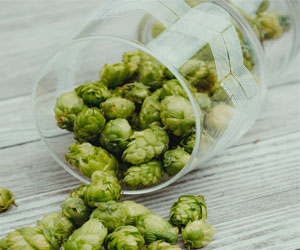 Another crucial aspect of beer craftsmanship is quality control. Craftsmen continually monitor their brews throughout the fermentation and conditioning stages, ensuring consistency and flavor stability. They understand that a small deviation in the brewing process can result in a vastly different beer, and maintaining the intended flavor profile is paramount.
Another crucial aspect of beer craftsmanship is quality control. Craftsmen continually monitor their brews throughout the fermentation and conditioning stages, ensuring consistency and flavor stability. They understand that a small deviation in the brewing process can result in a vastly different beer, and maintaining the intended flavor profile is paramount.
In the craft beer movement, beer craftsmanship goes beyond the brewing process. It extends to branding, marketing, and presentation. Craft breweries often take pride in unique packaging, labels, and taproom aesthetics, offering consumers a complete sensory experience that complements the liquid inside the bottle or glass.
Craftsmen also embrace innovation. They experiment with new ingredients, techniques, and styles, pushing the boundaries of what beer can be. This spirit of innovation has led to the creation of entirely new beer categories, such as sour ales and fruit-infused brews, expanding the palate of beer lovers.
Healing Stitches For Mind And Soul
 Sense Of Accomplishment: Completing a cross-stitch project provides a tangible sense of accomplishment. Watching a piece of artwork slowly take shape, stitch by stitch, instills a feeling of pride and boosts self-esteem.
Sense Of Accomplishment: Completing a cross-stitch project provides a tangible sense of accomplishment. Watching a piece of artwork slowly take shape, stitch by stitch, instills a feeling of pride and boosts self-esteem.
Emotional Expression: Cross-stitching can be a form of emotional expression. By selecting colors, patterns, and designs, individuals can channel their emotions into their creations, helping them process and cope with challenging feelings.
Distraction From Negative Thoughts: The process of cross-stitching serves as a constructive and enjoyable distraction from negative or intrusive thoughts. It can help redirect mental energy away from worries and concerns.
Connection And Community: Many individuals find solace in the cross-stitching community. Sharing projects, tips, and experiences with others can provide a sense of belonging and support, reducing feelings of isolation.
Exploring Herb Uses In Cooking
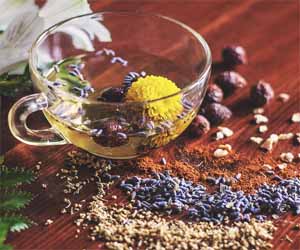 Rosemary And Lamb: Rosemary's robust flavor pairs harmoniously with the rich and tender nature of lamb.
Rosemary And Lamb: Rosemary's robust flavor pairs harmoniously with the rich and tender nature of lamb.
Mint And Desserts: Mint's refreshing taste is perfect for desserts like chocolate mousse or fruit salads.
Parsley And Seafood: The bright, grassy flavor of parsley beautifully complements seafood dishes, such as shrimp scampi.
Versatile Uses
Herbs are incredibly versatile and can be used in various culinary applications:
Marinades: Herbs can be included in marinades to infuse meat, poultry, or vegetables with flavor. For example, a marinade of garlic, rosemary, and lemon juice can transform chicken into a delectable dish.
Sauces And Dressings: Herbs can be used to create vibrant sauces, such as pesto or chimichurri, or to elevate salad dressings, like a balsamic vinaigrette with fresh basil.
A Timeless Tapestry Of Tradition And Artistry
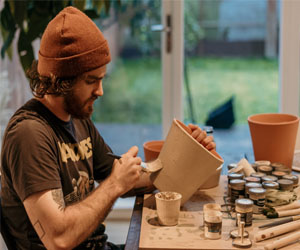 Cultural Significance: Pottery has held a profound cultural significance in the history of human civilization. In many ancient cultures, pottery was not just a craft; it was an art form deeply intertwined with rituals, spirituality, and daily life. From sacred vessels used in religious ceremonies to utilitarian items for food storage and preparation, pottery has played multifaceted roles in cultural practices.
Cultural Significance: Pottery has held a profound cultural significance in the history of human civilization. In many ancient cultures, pottery was not just a craft; it was an art form deeply intertwined with rituals, spirituality, and daily life. From sacred vessels used in religious ceremonies to utilitarian items for food storage and preparation, pottery has played multifaceted roles in cultural practices.
Global Diversity: What makes pottery culture so fascinating is its global diversity. Each culture has developed its own unique styles, techniques, and traditions in pottery. From the intricate porcelain of China and the terracotta of the ancient Greeks to the vibrant Talavera ceramics of Mexico and the earthy, rustic pottery of Native American tribes, the world of pottery is a testament to the ingenuity and creativity of humanity.
Cultural Identity: Pottery often reflects the identity and values of a culture. For example, Native American pottery features distinct geometric designs and motifs that are deeply rooted in their cultural heritage. Japanese ceramics embody the principle of wabi-sabi, celebrating imperfection and the beauty of transience.
A Journey Through Innovation And Diversity
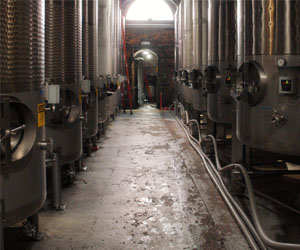 Diverse Terroirs: One of the remarkable features of New-World wines is the wide range of terroirs they encompass. New-World wine regions can be found across the globe, from the high-altitude vineyards of Argentina to the cool-climate wine regions of Oregon. This diversity allows for the cultivation of various grape varieties, each suited to specific terroirs. As a result, New-World wines offer an array of flavors and styles that cater to a broad spectrum of preferences.
Diverse Terroirs: One of the remarkable features of New-World wines is the wide range of terroirs they encompass. New-World wine regions can be found across the globe, from the high-altitude vineyards of Argentina to the cool-climate wine regions of Oregon. This diversity allows for the cultivation of various grape varieties, each suited to specific terroirs. As a result, New-World wines offer an array of flavors and styles that cater to a broad spectrum of preferences.
New Grape Varieties: New-World winemakers have been open to experimenting with grape varieties from around the world, introducing lesser-known grapes into their vineyards. For example, in the United States, you'll find varieties like Zinfandel and Petite Sirah, which are less common in European regions. This willingness to diversify grape varieties has led to the discovery of new and exciting flavor profiles, expanding the options available to wine enthusiasts.
Emphasis On Approachability: New-World wines are often celebrated for their approachability. While Old-World wines can sometimes come across as complex and reserved, New-World wines tend to be more fruit-forward, making them accessible to a wider audience. This approachability has contributed to the global popularity of New-World wines.
Innovative Aging Techniques: Many New-World winemakers have embraced modern aging techniques, such as the use of oak barrels from different regions, new oak versus old oak, and a range of toasting levels. These practices have helped create wines with distinctive characteristics, pushing the boundaries of traditional winemaking.
Sustainability And Environmental Practices: New-World wine regions have also been at the forefront of sustainable and eco-friendly winemaking practices. Many vineyards and wineries prioritize sustainability, organic farming, and environmentally responsible practices. This commitment to preserving the land and minimizing the environmental impact is a crucial aspect of New-World winemaking.